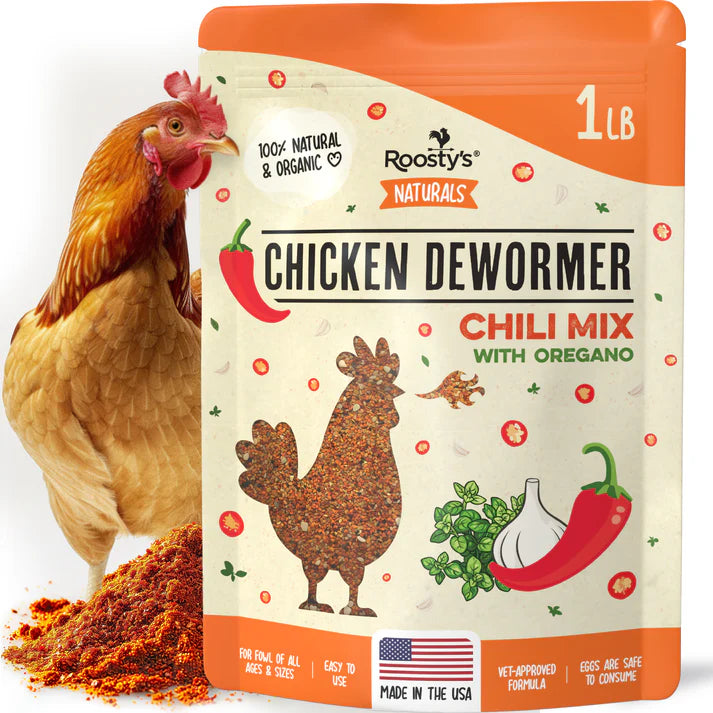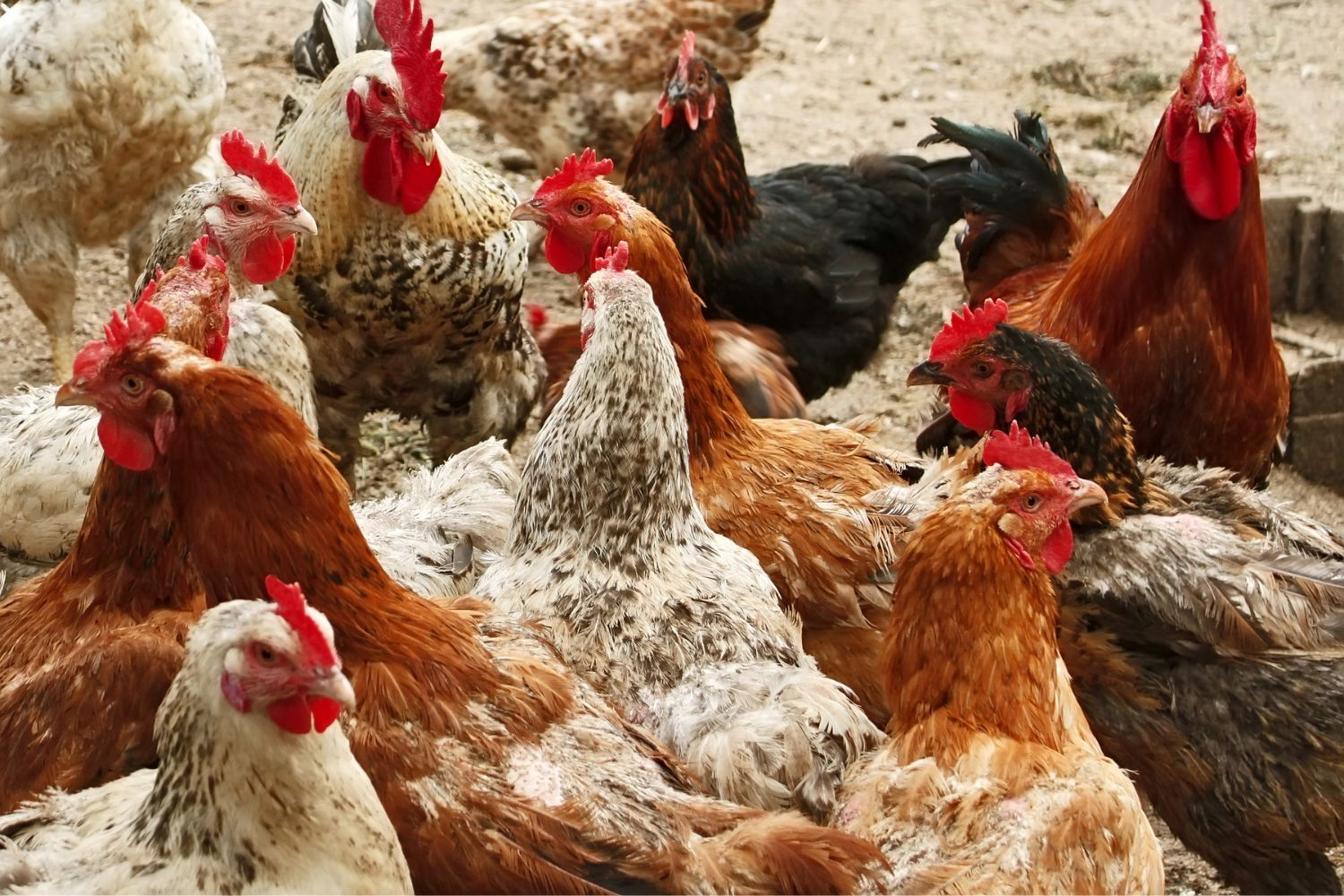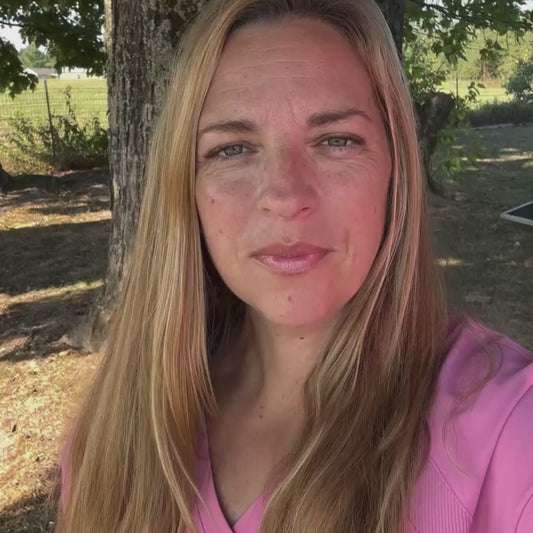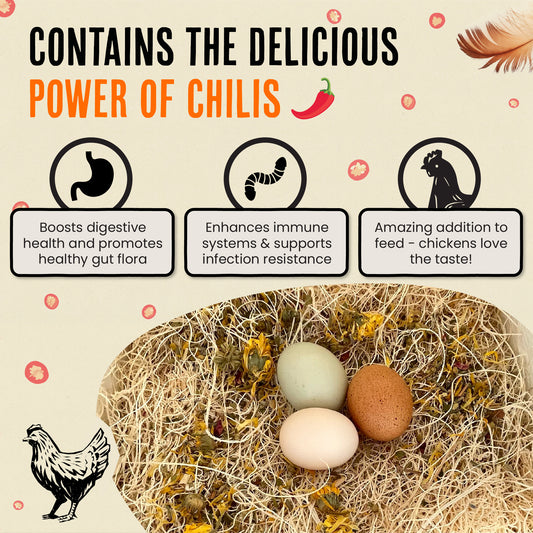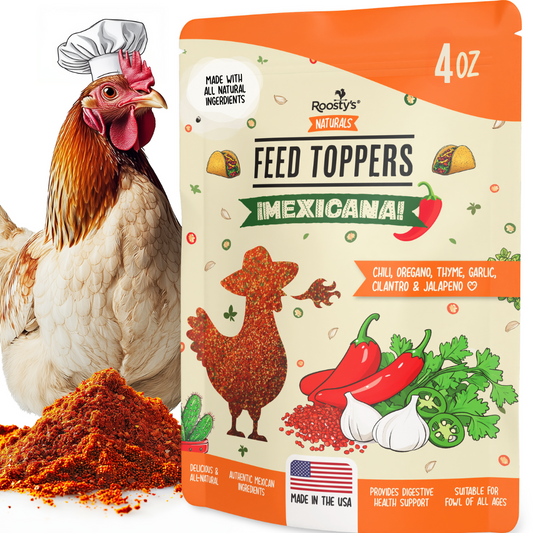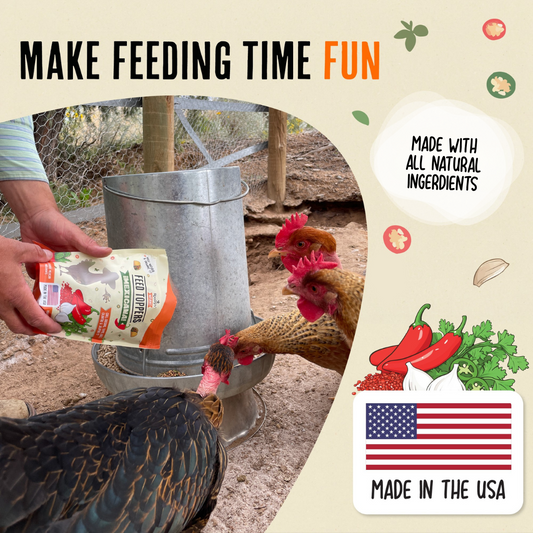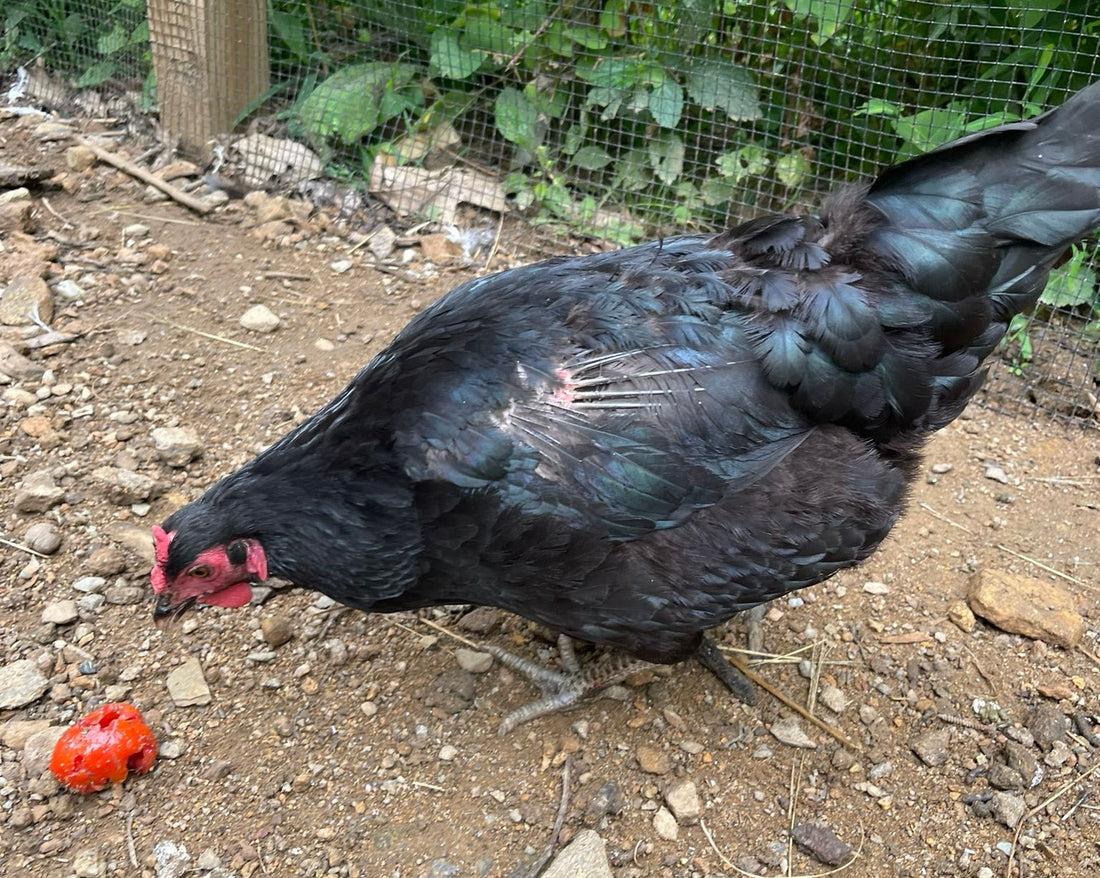
Why chickens molt their feathers, and how to support them

Written by Jennie Salandra
 Instagram: @MrsFarmMom
Instagram: @MrsFarmMom
 TikTok: @MrsFarmMom
TikTok: @MrsFarmMom
There’s an old wives tale in the chicken world that I haven't stopped pondering over. The saying goes, “if your chickens have a heavy molt in summer, you’re in for a rough winter."
And y’all know me, it’s August, so you know what I am thinking about... Christmas! I am a snow lover and am most active and alive during the fall and winter months. Surprisingly as well, my chickens also enjoy the winter months. Most of my breeds, including my fancy breeds, do very well in the cold! But with the incoming winter (and hopefully snow!) there’s a few big things in the chicken world we need to do to prepare, especially if your birds have been molting like mine have!
Now, what is molting? A lot of folks are unfamiliar with this totally natural process for mature birds. Molting is simply the process of shedding old feathers, and growing new, shiny plumage. Molting typically starts in birds that are 15-18 months, and happens very naturally throughout your birds life span. Molting can look pretty bad, and you may think your birds are sick or plucking their own feathers. So let me explain how and why the process occurs.
The first question you may ask is “why does molting occurs?” Molting happens for several reasons. First being feather renewal. Over the course of your birds life, feathers can become worn, damaged and less effective at providing insulation and protection. Molting allows the chickens to replace their old feathers with new ones, maintaining their ability to regulate their body temperatures, hence the wive’s tale! If your chickens are molting heavily in the late summer/early fall, they are preparing for a harsh winter. The second reason is just that, seasonal preparation. Molting coincides typically with the change of seasons. This timing allows your birds the time to prepare for the colder/warmer months. And the third reason molting can occur is your birds reproductive cycle! Not many people know this, but after a laying cycle, chickens enter a resting period where they molt and rejuvenate their bodies for the next laying season!
So while it may look ugly, it’s a totally awesome thing that your birds naturally do! The process can last anywhere from 8—16 weeks. So here’s what you need to look for if your birds are beginning to molt.
First, as I mentioned above, they will start shedding their old feathers. This usually starts from the head and neck and progresses down the body to the tail and wings. Feather loss is generally symmetrical, meaning both sides of the chicken lose feathers at about the same rate. This is crucial to understand because if your birds are sick or pecking, they typically wont be doing it in these spots, or symmetrical. Next you’re going to notice the growth of new plumage, these are called pin feathers, because they literally look like little pins sticking up. It’s cute and ugly all at the same time! And lastly, you’ll notice (sadly) a pause or reduction in your hens egg production. When your birds are molting they shift all their energy into the process, so sometimes it will slow down their egg production or stop it all together. It’s okay, after a few weeks you’ll be back in the egg dealing business!
What’s wild to me is that a birds feather is 85% protein. So they’re losing a lot of protein and energy when they molt. What I like to do consistently is use the Brewer’s Yeast from Roosty’s in their feed. I consistently do it, ESPECIALLY when molting because the Brewer’s Yeast is scientifically made to increase their protein and help your birds along. Brewers Yeast is 40% protein content, double that of the competition, and it’s infused with amazing beneficial supplements like niacin, garlic and oregano. PLUS it doesn't smell like garlic, which while that doesn’t matter to the birds, it matters to me! It’s packed with Omegas and Vitamins, that help aid in the molt process and the egg laying process equally.
In summary, molting is totally natural, and a really cool part of your birds life. Adding protein to your flocks diet helps this process go smoother for your birds. Now, what’s your take, do you believe the wive’s tale after reading all this?! Let me know via @MrsFarmMom on TikTok :) Happy Molting!
